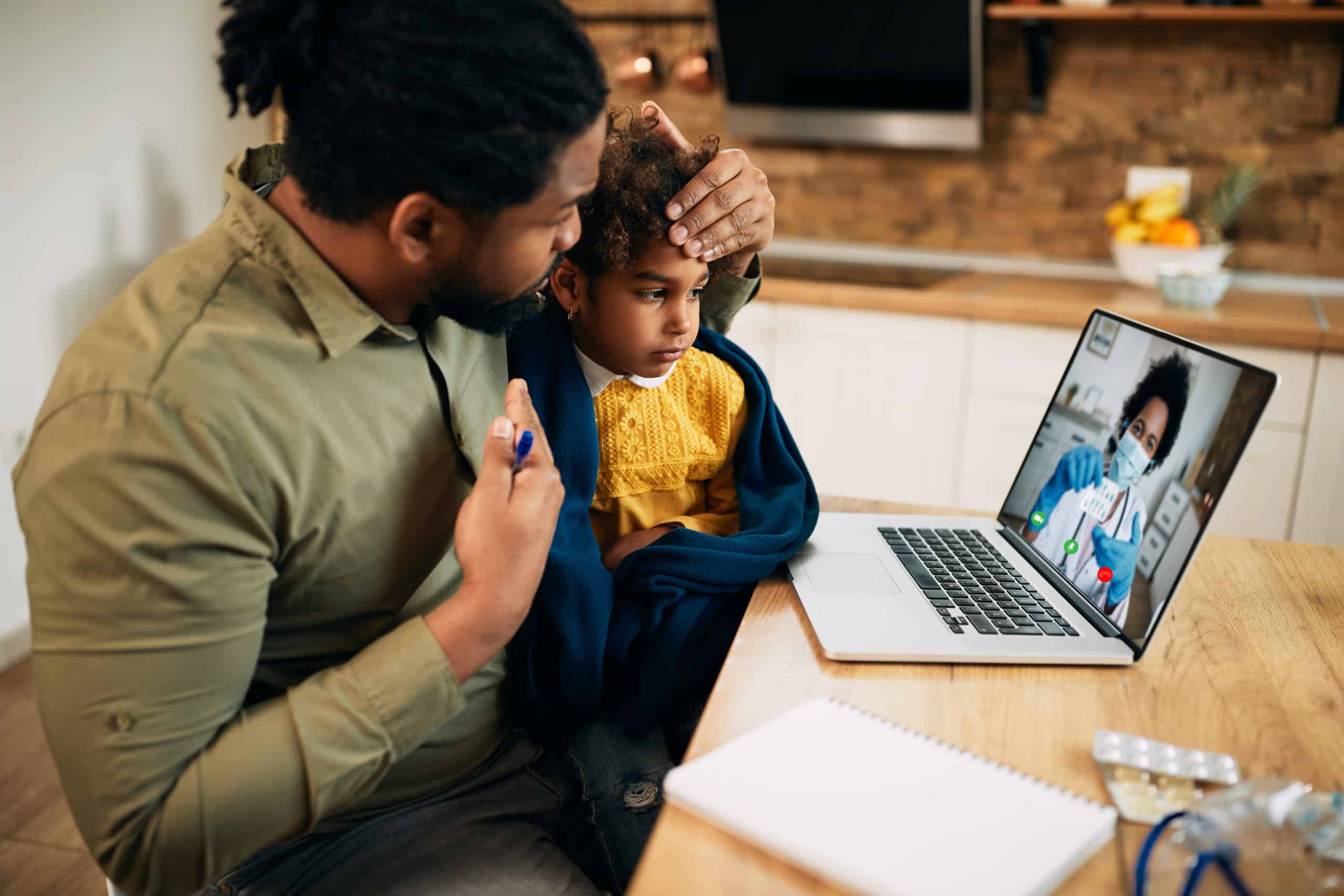The healthcare industry is transitioning to digital platforms and telemedicine is becoming increasingly popular for patients with low-acuity health needs. However, as more patients and providers adopt this technology, it will be critical to understand the strategies best suited to provide positive patient experiences. Telemedicine is not a novel medical technology: for years, providers have hailed telemedicine as critical for closing geographic care gaps, assisting patients in accessing mental health treatment, and assisting busy parents in getting their children treatment in between busy schedules.
The patient experience has traditionally been defined as patient-reported encounters and events that occur across the continuum of care. In the virtual world, patient experience may be defined differently.
Here are some of the best practices you can implement to ensure positive patient experiences:
Webside Manners
It is important to begin building a trusting relationship with patients through an explicit focus on “webside manner” when transitioning from clinical settings to a virtual environment. It’s also critical to think about the presentational aspects of webside manners. Patients will judge their clinician’s credibility based on their virtual presentation. As a result, lighting, camera angles, and sound quality are vital to maintaining a high level of professionalism and quality while creating each patient’s experience. Maintain eye contact with the patient when speaking or listening.
Assuring that you are in a private and quiet environment; taking notes and minimizing typing during the conversation, which may add noise to the conversation; guiding patients through better environment setup (positioning, camera, lighting, and microphone). Allowing for “lag-time” and giving the patient time to listen, think, and respond. These “web-side” etiquettes concentrate on how a provider can get the most information out of the patient and ensure the best possible experience.
Communication
Showing empathy is essential for positive patient-physician relationships. Despite popular belief, the possibilities for further humanizing what can appear to be a less-than-caring system for those who live within it are limitless. The emphasis on receiving communication training to optimize positive patient experiences has been shown to increase empathy and patient satisfaction in both inpatient and outpatient settings. Among the virtual visit communication tips are:
- Respect the patient (“Hello, Mr. Smith”).
- Present virtual technology.
- Set the agenda collaboratively.
- Make an emphatic statement (“I hear your concern”).
- Encourage patient narratives (“Tell me more”).
- Active listening (“You have said…”).
- Exchange information with the patient.
- Create a plan collaboratively.
- Confirm the patient’s understanding by asking them to share what they plan to do going forward.
- Provide appreciative closure (“I’m glad you scheduled this visit”).
While virtual platforms may not have the same feel as seeing patients in person, there are ways to convey empathy while ensuring a positive patient experience:
- Establish the relationship (“Are you new to virtual care?”).
- Display nonverbal empathy.
- Acknowledge the situation (“I am sorry you feel ill”).
- Validate feelings (“That is painful”).
- Name the emotions (“You must feel …”).
- Develop the relationship (“It was a pleasure to speak with you, Mr. Smith”).
Examining communication best practices will assist providers in maintaining a high level of patient satisfaction with their care as it transitions to a digital format. If done correctly, the technology becomes unnoticeable to patients participating in the telemedicine interactions.
Look the Part
All of your actions in a virtual environment are magnified on camera. With the camera fixed on you, every movement, facial expression, and piece of clothing in the frame competes for the patient’s attention. Is there something in your teeth? The patient will notice. Is there coffee on your collar? No doubt, their gaze will be drawn to it throughout the meeting. It is critical to consider what you wear and how you appear on camera. Not only is it important to appear professional, but any minor disruption can potentially be a major distraction in the eyes of the patient.
Clinicians should dress for a telemedicine consultation, in the same way, they would for a personal consultation; no clinician would show up to a personal consultation wearing a t-shirt or a baseball cap. Avoid wearing busy patterned clothing or engaging in fidgety behavior that could distract the patient. Wear your name badge or another form of identification (e.g., a white coat with your name on it). In essence, telemedicine does not necessitate the use of surgical or personal protective equipment, but it does require treating the appointment as if it were an in-person consultation, as this results in a positive patient experience when the patient feels important and taken seriously.
Be Prepared
Part and parcel with keeping up positive patient experiences is being prepared for a telemedicine visit. The telemedicine environment must have all of the tools required to effectively and efficiently care for the patients’ needs. Preparation extends beyond gathering a telemedicine provider’s toolkit. Despite this, clinicians who provide care via telemedicine should be prepared with the following: understand how to use and test the equipment, know who to contact for troubleshooting, and ensure proper placement of the camera, microphone, and speakers. Examine the patient history chart/file in advance, ensuring that the appropriate consent forms and documentation of types of visits (audio/audio and video) are available. Patients who are concerned that someone might walk in and disrupt the encounter or overhear sensitive health information may be put off by the doors in the shot. This is especially important for providers who may deliver telemedicine from the comfort of their own homes. Clearing clutter, establishing an adequate broadband connection, and creating a more clinical-looking space may help patients gain confidence in their experiences.
Positive patient experiences ensure Telemedicine’s future

When deployed appropriately, telemedicine can enhance patient care and possibly reach patients who would not otherwise seek care or return for a follow-up. It is both convenient and efficient in that it can engage patients who would otherwise be too busy or live too far away to receive adequate care. Although the onus is on the provider to ensure that all telemedicine practices are appropriate, private, and secure and that the patient’s experience is considered at all times. The practices listed above are just a few ways to ensure that patients have a positive experience with telemedicine.
They also guarantee comfort with virtual platforms and improve rapport with patients during virtual encounters. The value in providing easier access and greater convenience to patients is critical and we must continue to improve it. Ultimately, patients need to be heard and understood, whether in-person or via video. Telemedicine should not undermine the ability to engage on a personal level. Rather, it should be a tool to enhance the ability to connect with patients and provide them with various positive experiences.
Thank you for reading. To stay up to date on current healthcare topics and news about Aetonix, subscribe to our mailing list at the bottom of our blog page. Connect with us on social media using the links at the bottom of this page and share your thoughts!



